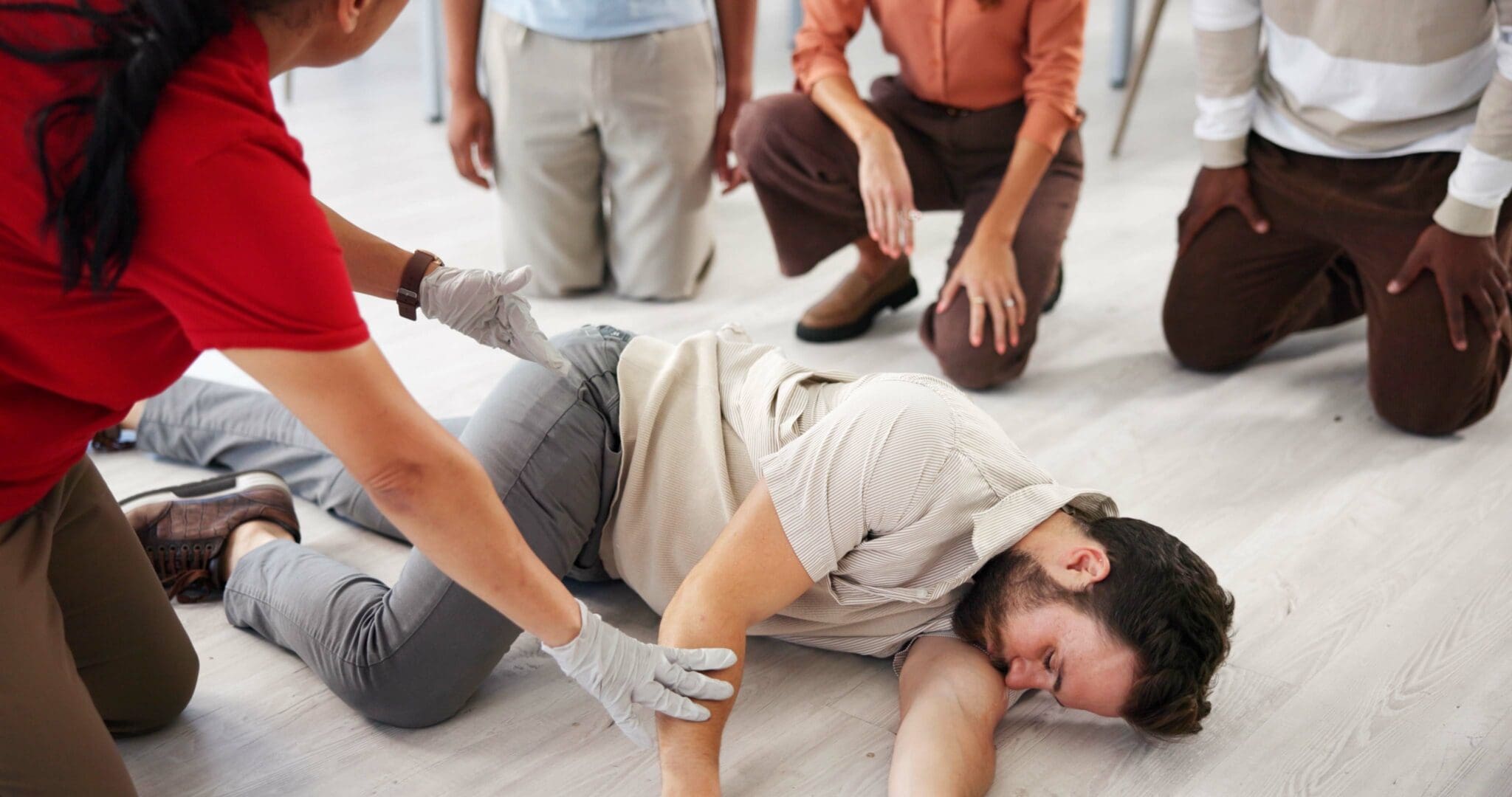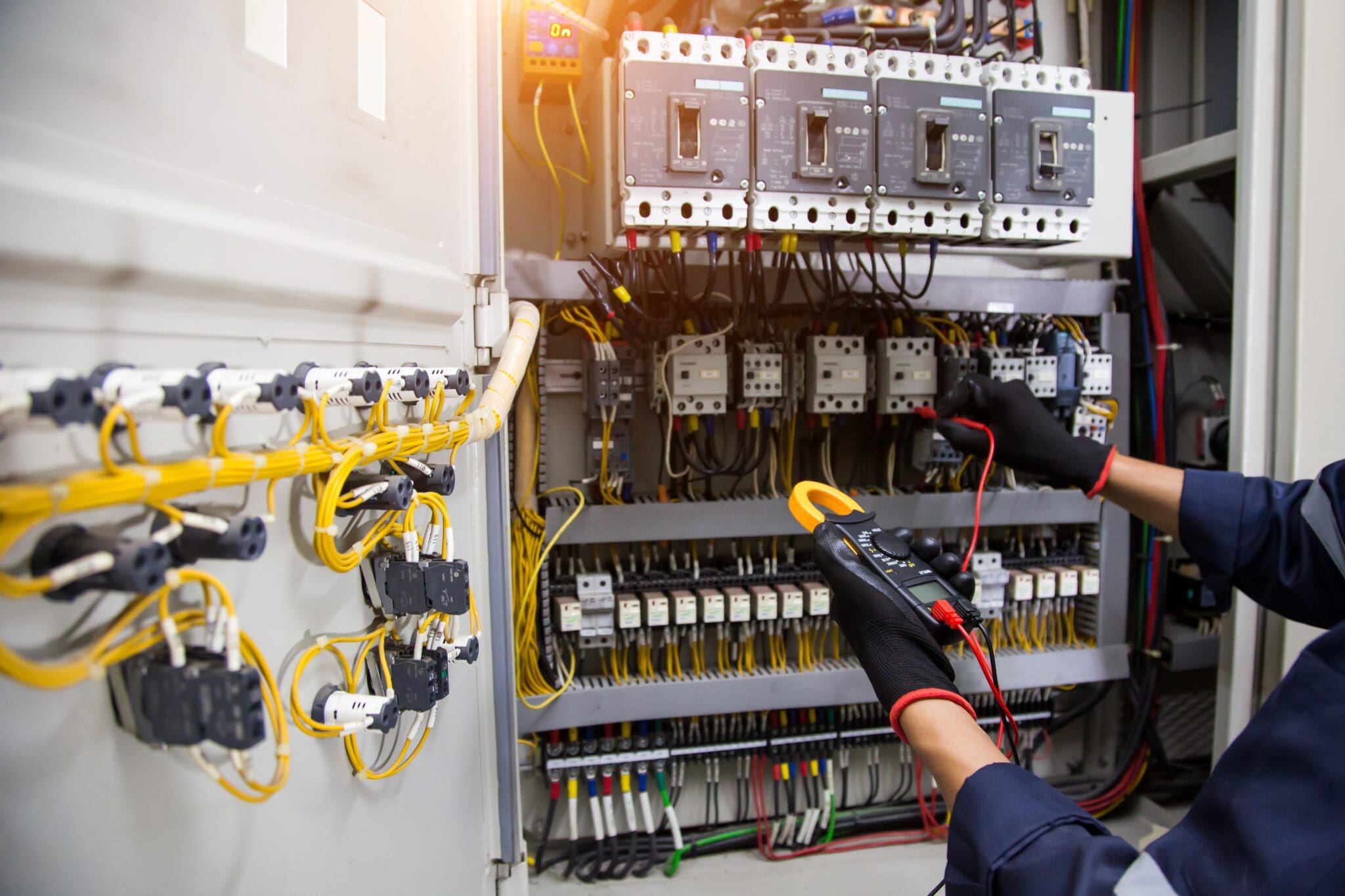In this article
Each year in the UK, around 1,000 cases of electrical burns or shocks are reported to the Health and Safety Executive (HSE). Tragically, about 30 of these result in death. Most injuries happen because people come into contact with live cables — whether underground, overhead or exposed by damage.
The real danger lies in what you can’t see. While the skin might only show a small mark, or a little redness, the internal damage can be severe. Nerves, muscles and organs may be injured. In some cases, the electric shock interferes with the heart’s rhythm or affects breathing, posing an immediate threat to life.
Electrical burns can come from many sources. Faulty appliances, damaged wiring, power tools or lightning strikes. They’re all common culprits. At work, they often involve high-voltage machinery. Outdoors, fallen power lines and electric fences are risks. Even in the home, everyday objects can become dangerous. Especially if safety precautions are not followed. The injuries can be hidden and serious, even a minor electric shock should never be ignored. Understanding what electrical burns are, how they happen, and how to respond can save lives.
What is an Electrical Burn?
An electrical burn happens when an electric current passes through the body. It causes damage to the skin and the tissues underneath. Burns from fire or chemicals are different. These only affect the surface. Electrical burns are different. The electricity can travel deep inside, harming muscles, nerves and even vital organs.
Let’s compare:
- Thermal burns come from direct contact with heat — like flames or hot objects.
- Chemical burns happen when skin meets acids or other corrosive substances.
- Electrical burns work from the inside out. As the current moves through the body, it generates heat internally. This can destroy cells and tissues that you can’t see.
Because the damage happens beneath the surface, the skin might only show small entry and exit points where the electricity went in and out. These marks can be easy to miss. But underneath, serious injuries may be occurring. Muscles could be torn, bones broken or the heart’s rhythm disturbed.
Where do they occur?
Electrical burns can occur anywhere:
- At home through faulty appliances or accidental contact with live wires.
- At work when dealing with machinery and electrical systems.
- Outdoors from lightning strikes or fallen power lines.
The tricky part is that the harm isn’t always obvious at first. That’s why every electric shock needs to be taken seriously, no matter how mild it seems.
Even relatively low voltages — as low as 50 volts — can cause an electrical burn. It’s not just about how strong the shock feels; it’s about what it does inside the body.
How to treat an electrical burn
Electrical burns need quick, careful action. What you do in the first few minutes can make a big difference.
- First — and most importantly — never touch someone who is still in contact with the electrical source. You could become a victim too. Switch off the power at the source if possible. If you can’t, use a non-conductive object like a wooden broom handle or plastic to move the person away safely.
- Once the person is clear, check if they are conscious and breathing. If they’re not breathing or have no pulse, call emergency services immediately. Start CPR if you know how.
- Next, treat the burn itself. Electrical burns often have entry and exit wounds. These may look small. But treat them seriously. Gently cool the affected area with cool (not cold) water for about 10 to 20 minutes. Avoid using ice — it can cause more damage.
- Cover the burn with a clean, non-stick cloth or sterile dressing. Don’t apply creams, oils or any home remedies. Electrical burns can cause deep damage. So it’s vital to get medical help even if the injury looks minor.
- Monitor the person closely. Watch for signs of shock. These are pale skin, rapid heartbeat, shallow breathing. And keep them lying down and warm if possible.
In hospital, doctors will check for internal injuries. They may run tests to assess muscle damage, heart function and more. Treatment could include fluids, pain relief, wound care. Sometimes surgery would be needed.
Remember, electrical burns can have delayed symptoms. Even if the person feels okay at first, they need a professional’s assessment.
If you’re an employer or work with electricity, make sure staff know these steps and have proper safety training. Preventing electrical burns is always better than treating them.

What causes electrical burns?
Electrical burns happen when the body comes into contact with electricity. But how does that happen?
The most common cause? Touching live wires or faulty appliances. A frayed cable. A broken plug. A damaged socket. They can all deliver a sudden shock. Sometimes it’s a simple accident at home. A child might put a metal object into a socket. Or someone might use an electrical tool incorrectly.
Workplaces can be dangerous too. Factories, construction sites and power plants all have high-voltage machinery and equipment. One wrong move, and someone might come into contact with live electricity.
Outdoor incidents are also common. Fallen power lines after storms. Electric fences on farms. Lightning strikes.
Sometimes, people put themselves at risk without realising it. They climb pylons. Vandalise electrical equipment. Or they ignore safety warnings.
In short, electrical burns are caused by direct contact with electricity. From any current, household current, industrial sources or natural events like lightning.
Understanding the causes helps us stay safe. Because it forces us to be cautious around electricity and follow safety guidelines.
Types of electrical burns
Not all electrical burns are the same. They come in different forms. It depends on how the electricity contacts the body. And the strength of the current.
- Low-voltage burns happen with household electricity. Usually under 1,000 volts. These burns might look small. But can still cause serious injury beneath the skin.
- High-voltage burns involve currents over 1,000 volts. They’re often linked to industrial accidents or power lines. These burns are much more dangerous and can cause deep tissue damage. They can even affect bones.
- Arc burns occur when electricity jumps from a source to the body without direct contact. The electric arc produces intense heat. This can cause burns similar to fire injuries.
- Flash burns happen from the heat of an electric explosion or flash. This is without the current passing through the body. These usually affect the skin’s surface.
- Oral electrical burns are also possible. These are common in young children who bite electrical cords. These burns are often found around the mouth and can cause swelling and pain.
Electrical burns may cause internal injuries that don’t show on the skin. The current travels inside. It damages muscles, nerves and organs. This hidden damage makes medical assessment essential. Even if the burn looks minor.
Each type requires careful attention. Knowing the differences can help identify the severity and guide proper treatment.
Signs of electrical burns
Electrical burns don’t always shout for attention. Sometimes the signs are subtle. And they can be easy to miss.
Look for entry and exit wounds on the skin. These may be small, round or irregular marks where the electricity entered and left the body. They might look like tiny holes or scars.
Skin changes are another clue. The area around the burn could be red, blistered, or charred. Hair or clothing near the injury may be singed or burnt.
Pay attention to swelling or unusual patches of discolouration. The skin might feel numb or strangely cold.
Behaviour can also give hints. Someone who has suffered an electrical burn may appear confused or weak. They might have trouble moving limbs. Or feel tingling sensations.
If the burn happened at work or home, check the surroundings for clues. Exposed wires. Fallen cables. Sparks. Or damaged appliances.
Remember, because electrical burns can cause hidden damage. Don’t rely only on what you see. If you suspect an electrical burn, it’s best to seek medical advice right away.
Symptoms of electrical burns
Electrical burns affect more than just the skin. The body often sends warning signs that go beyond visible injuries.
Common symptoms include numbness or tingling in the affected area. You might also notice muscle pain or weakness. Sometimes even spasms or cramps.
More serious signs can affect the whole body. Irregular heartbeat or chest pain may occur if the electricity has impacted the heart. Difficulty breathing, dizziness or confusion? These are also red flags.
Some people experience nausea or headaches. In severe cases, seizures or loss of consciousness can happen.
It’s important to know that symptoms don’t always show immediately. They may develop hours after the injury. This is why anyone exposed to electricity should get checked by a medical professional. Even if they feel fine at first.

How electrical burns are diagnosed or treated
Electrical burns can be tricky. The damage isn’t always obvious on the surface, so diagnosis takes careful attention.
Diagnosis
When someone arrives at the hospital after an electrical injury, doctors start by asking about the accident: What happened? How strong was the current? How long was the contact? These details help guide the examination.
The visible burns—the entry and exit wounds—are checked closely. But because electricity can travel deep, doctors look beyond the skin. Blood tests and imaging scans, like X-rays, MRIs, or CT scans, are often needed. These assess muscle damage, bone fractures and possible internal injuries.
Heart monitoring is critical too. Electric shocks can disrupt the heart’s rhythm. They sometimes cause dangerous arrhythmias. Patients usually get hooked up to an ECG (electrocardiogram) to watch their heartbeat over time. In some cases, continuous monitoring in a hospital ward or ICU is necessary.
Treatment
Treating electrical burns depends on how severe the injuries are. First and foremost: stabilising the patient’s condition. This might involve managing breathing difficulties or heart problems.
Fluid replacement therapy is common because electrical burns can cause severe fluid loss. Similar to thermal burns.
The burns themselves are treated with great care. Cleaning the wounds is vital to prevent infection. Sometimes, deep tissue damage means surgery is needed. This can include removing dead tissue (debridement) or even skin grafts to help healing.
Pain management is a major part of treatment. Electrical burns can cause intense pain. Doctors use strong pain relief medications.
Rehabilitation can be lengthy. Nerve damage and muscle injuries might affect movement. Physiotherapy is used to help patients regain strength and function.
Finally, psychological support is important. Suffering an electrical injury can be traumatic. Counselling or support groups can aid recovery.
Long-term effects and complications of electrical burns
Electrical burns can leave lasting marks. Both visible and hidden. Scarring is common. It often requires skin grafts to repair damaged areas. These scars can tighten over time. It causes contractures that restrict movement. Daily activities are affected. Surgical interventions and physical therapy may be necessary to restore flexibility and function.
Nerve damage is another serious concern. The electric current can disrupt nerve signals. This leads to chronic pain, numbness or tingling sensations. These effects can persist long after the injury heals. This neuropathic pain as it’s called can be difficult to treat. And it significantly impacts quality of life.
Muscle weakness often accompanies electrical burns. Especially when deep tissues are involved. Recovery is usually slow. It demands extensive rehabilitation. Patients may face challenges regaining strength and coordination. They need tailored physiotherapy programmes to rebuild muscle function.
Psychological effects should not be overlooked either. Many survivors experience anxiety, depression or post-traumatic stress disorder (PTSD) linked to the traumatic event. Flashbacks, fear of electricity and sleep disturbances are common. Early mental health support and counselling help patients cope.
Infection remains a persistent risk with electrical burns. Damaged skin and deep wounds create entry points for bacteria. Careful wound management, including cleaning and sometimes antibiotics, is needed to prevent complications. In severe cases, infections can delay healing. Or they can lead to systemic issues requiring hospital treatment.
In summary, electrical burns often demand:
- Long-term medical care.
- Physical rehabilitation.
- Psychological support.
How to prevent electrical burns
Electrical burns are serious. But many can be prevented. How? By staying alert and following simple safety rules.
At Home
Check your appliances regularly. Are cables frayed or plugs damaged? Replace them. Don’t overload sockets with too many devices. It’s tempting, but dangerous. Use extension leads wisely. Never daisy-chain them. And if you have kids, child-proof your home. Cover sockets and hide wires out of reach. Keep electrical devices away from water. Simple steps, big difference.
At Work
Electrical safety at work isn’t optional. It’s lifesaving. Whether you’re on a construction site, in a factory or maintaining office systems, the risks are real.
PPE (Personal Protective Equipment) is your first line of defence. That means wearing insulated gloves and boots, flame-resistant clothing and eye protection where necessary. Use insulated tools designed for electrical work. Don’t take shortcuts. The right gear can stop a deadly current in its tracks.
Lockout/tagout procedures must be followed to the letter. Before performing maintenance, make sure machinery and electrical systems are properly shut down and can’t be switched on by mistake. Use padlocks, signs and checklists to secure the system until it’s safe to work.
Routine inspections are essential. Frayed wires, exposed conductors, overheating plugs. These are warning signs that can’t be ignored. Regular maintenance and testing of electrical systems can catch faults early and prevent incidents.
Training is non-negotiable. Every worker should know the basics of electrical safety. Not just electricians. That includes recognising hazards, responding to emergencies and understanding voltage levels and equipment limits. Refresher courses should be part of your calendar. Not just a one-time event.
Risk assessments must be current and site-specific. They should cover everything from working near live wires to weather-related risks like flooding or lightning. Good assessments don’t sit in a drawer. They’re shared, updated and acted upon.
If your workplace isn’t doing these things, speak up. Raise concerns. Push for safer practices. Lives depend on it. Maybe even yours.
Outdoors
Storm damage can bring down power lines. Seen one? Stay far away. Don’t touch fallen cables or anything near them. Electric fences on farms? Treat them with respect. They carry a real shock. And lightning? When the sky roars, get indoors. Wait for the storm to pass.
Spotting danger
What if you see exposed wires in public? Or sparks at work? Don’t ignore it. Report it immediately. Notify the right people — safety officers, utility companies, local authorities. Your action could prevent serious injury.

8 Key Takeaways
Here are the eight most important points to note about electrical burns:
- Electrical burns can be deadly. Even small shocks may cause serious internal injuries.
- The damage isn’t always visible. Entry and exit wounds might look minor. But muscles, nerves and organs can be harmed inside.
- Common causes include faulty appliances, live wires, power tools, lightning strikes and industrial equipment.
- Types vary. From low- and high-voltage burns to arc, flash and oral burns. Each has unique risks.
- Symptoms may be delayed. Watch for numbness, pain, weakness, irregular heartbeat or confusion. Even hours later. Diagnosis goes beyond the skin. Hospitals will assess internal damage with scans, ECGs and blood tests.
- Prevention is key. Check home appliances, use sockets safely, wear PPE at work, inspect equipment, and follow lockout/tagout rules.
- Outdoors? Stay safe. Keep clear of fallen wires, handle electric fences cautiously and seek shelter during storms.
- See a hazard? Report it. Quick action saves lives.






